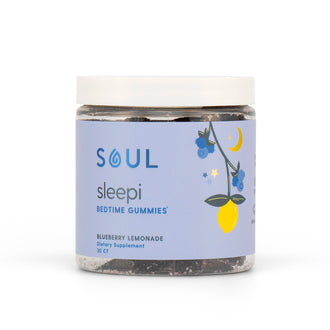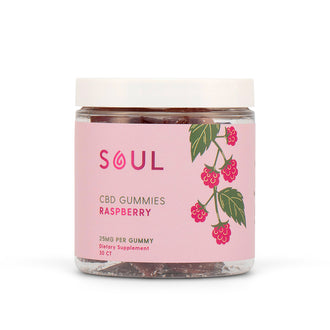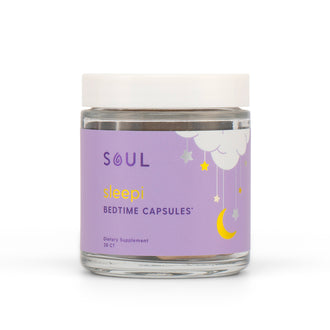Key Takeaways:
- THC-JD may offer stronger psychoactive and therapeutic effects compared to THC due to its unique interaction with the endocannabinoid system.
- Understanding the evolving legal status of THC-JD and adhering to safety guidelines is crucial for responsible use.
- While promising, the potential benefits and applications of THC-JD require further scientific research to fully understand its efficacy and safety profile.
THC-JD is a new cannabinoid found in cannabis, similar to the well-known THC but with a unique molecular structure that interacts differently with the body's endocannabinoid system, potentially influencing various physiological and cognitive functions. Although not as well-studied as THC and CBD, early research and anecdotal evidence hint at unique effects and benefits, making THC-JD an intriguing subject for further scientific investigation and potential therapeutic applications. It represents an important area for those interested in the expanding knowledge and use of cannabis compounds.
Embark On A Journey Of Relaxation With Soul's Out Of Office GummiesLet go of the stress and welcome a state of calm with our Out of Office Gummies. Specifically crafted to help you unwind and enjoy a moment of respite, Soul's gummies are the perfect escape. Savor the feeling of a mini-vacation with every bite:
Turn your time off into a true retreat! Treat yourself to Out of Office Gummies now! |
The Science Behind THC-JD
The science of THC-JD focuses on how its unique molecular structure affects the body's endocannabinoid system (ECS), which regulates mood, appetite, pain, and memory by binding to receptors, especially CB1 receptors in the brain. Although research is just beginning, early studies suggest THC-JD might bind more strongly to these receptors than THC, potentially offering stronger effects that could help treat conditions like chronic pain, anxiety, and insomnia. Additionally, THC-JD's production in the cannabis plant depends on factors like genetics and growing conditions, knowledge important for growers wanting to increase its concentration for medical or recreational use. More studies are needed to fully understand THC-JD's effects and safety.
Comparing THC-JD with Other Cannabinoids
THC-JD is one of the many cannabinoids found in the cannabis plant, each with its unique effects and benefits. The most well-known cannabinoids are THC and CBD, which have been extensively studied and utilized for their medicinal and recreational properties. However, the cannabis plant contains over a hundred cannabinoids, including CBG (cannabigerol), CBN (cannabinol), and THCV (tetrahydrocannabivarin), among others. Understanding how THC-JD compares to these compounds can provide insights into its potential uses and benefits.
Potency and Effects
Early research and anecdotal reports suggest that THC-JD may be more potent than THC in terms of its psychoactive effects. This increased potency means that THC-JD could offer stronger therapeutic benefits for conditions such as pain and anxiety, but it also raises questions about its safety and the potential for adverse effects.
Therapeutic Benefits
Like THC, THC-JD is believed to offer therapeutic benefits, including pain relief, anxiety reduction, and potential anti-inflammatory properties. However, it may also have unique benefits not shared by THC, due to its distinct interaction with the ECS. Comparatively, CBD is known for its non-psychoactive effects and is used to treat conditions like epilepsy, anxiety, and chronic pain without inducing a high.
Legality and Availability
The legal status of THC-JD is complex and varies by jurisdiction, much like other cannabinoids. In regions where cannabis is legal for medicinal or recreational use, THC-JD may also be permitted. However, its novelty means that it may not be specifically addressed in existing legislation, leading to a legal gray area.
Potential Benefits of THC-JD
Pain Relief
One of the most promising areas of THC-JD research is its potential for pain management. Due to its potent interaction with cannabinoid receptors, particularly CB1 receptors in the brain, THC-JD may offer significant analgesic effects, making it a potential alternative for treating chronic pain conditions.
Anxiety and Mood Disorders
THC-JD might also have benefits for managing anxiety and mood disorders. Its potent effects on the ECS could help modulate mood and anxiety levels, offering a natural alternative to traditional pharmaceuticals for some individuals.
Anti-Inflammatory Effects
Like other cannabinoids, THC-JD may possess anti-inflammatory properties. This could make it useful in treating a range of conditions associated with inflammation, such as arthritis, autoimmune diseases, and neuroinflammatory conditions.

Sleep Aid
The potential of THC-JD to act as a sleep aid is another area of interest. Its strong psychoactive effects might help to induce sleep and improve sleep quality for people suffering from insomnia or other sleep disorders.
Neuroprotective Properties
Early research suggests that cannabinoids, including THC-JD, could have neuroprotective effects. This could open up avenues for the use of THC-JD in treating neurodegenerative diseases, although much more research is needed in this area.
Legal Status and Availability of THC-JD
The legal status of THC-JD is a complex issue that varies significantly from one jurisdiction to another, largely due to the evolving nature of cannabis laws worldwide. As a relatively new cannabinoid, THC-JD falls into a gray area in many legal frameworks that were established before its discovery or without the anticipation of novel cannabinoids.
In regions where cannabis is legal for recreational or medicinal use, cannabinoids like THC-JD might also be legal. However, this is not always the case, as some jurisdictions have specific regulations regarding the concentration of psychoactive cannabinoids in cannabis products. It's crucial for consumers and businesses to stay informed about local laws to ensure compliance.
How to Use THC-JD Safely
Start with Low Doses
Due to its purported higher potency compared to THC, starting with low doses of THC-JD is advisable. This approach allows individuals to gauge their tolerance and response to its effects, minimizing the risk of adverse reactions.
Consult Healthcare Professionals
Before incorporating THC-JD into your regimen, especially for therapeutic purposes, consulting with a healthcare professional is essential. This is particularly important for individuals with pre-existing health conditions or those taking other medications, as THC-JD may interact with other drugs.
Purchase from Reputable Sources
Ensuring that THC-JD products are sourced from reputable providers is crucial. Quality control and accurate labeling are essential for safety, as they guarantee the product's purity and the concentration of THC-JD.
Be Aware of Legal Implications
Understanding the legal status of THC-JD in your jurisdiction is vital to avoid legal issues. Laws regarding cannabis and its derivatives vary widely, so staying informed about local regulations is necessary.
Monitor Effects
Keeping track of how THC-JD affects you can help in adjusting doses and usage patterns for optimal results. This is particularly important for individuals using THC-JD for specific therapeutic outcomes.
Safety Precautions
Avoid operating heavy machinery or driving under the influence of THC-JD, as its psychoactive effects can impair judgment and motor coordination. Additionally, consider the setting and your responsibilities before using THC-JD to ensure a safe and positive experience.

Final Thoughts
The future of THC-JD, a new cannabinoid, is promising but still in its early stages, focusing on further research, development of cannabis-based treatments, and navigating regulatory challenges. Scientific research is crucial, with needed clinical trials to test its safety and effectiveness for various conditions, and studies on how it interacts with the body and other cannabinoids. As research advances, THC-JD's potential for treating a wide range of conditions like pain, anxiety, and inflammation could lead to significant therapeutic applications. Regulatory evolution is also important, as laws must adapt to safely and legally accommodate THC-JD, guiding its production and use. The cannabis industry is likely to innovate, creating new THC-JD products like strains, extracts, and edibles to meet growing consumer demand. Lastly, the global response to THC-JD, varying by country, will influence its research, production, and sale, highlighting the need for international cooperation in developing THC-JD-based therapies.
Read also:
- THC Vs. THCA: Understanding The Effects And Potency Of Cannabis Compounds
- Delta 9 THC: The Potent Cannabinoid You Should Know About
- Top 5 THC Edibles For A Flavorful High
Frequently Asked Questions
What distinguishes THC-JD from THC?
THC-JD has a different molecular structure than THC, which may result in a higher potency and distinct effects on the body. This difference influences its interaction with the endocannabinoid system, potentially offering unique therapeutic benefits.
Can THC-JD cause a 'high' similar to THC?
Yes, due to its interaction with the CB1 receptors in the brain, THC-JD can cause psychoactive effects similar to, but potentially stronger than, THC. The intensity of the 'high' can vary based on dosage and individual sensitivity.
Is THC-JD natural or synthetic?
THC-JD is a naturally occurring cannabinoid found in the cannabis plant. It is not a synthetic compound but is extracted from the plant through various methods.
How can I determine the right dosage of THC-JD for me?
The right dosage varies from person to person. It's best to start with a very low dose and gradually increase it while monitoring your body's response. Consulting with a healthcare professional is also recommended.
Are there any specific strains of cannabis that are high in THC-JD?
Currently, specific strains high in THC-JD are not well-documented due to the cannabinoid's recent discovery. As research progresses, breeders may develop strains with higher concentrations of THC-JD.
Can THC-JD be used in edibles?
Yes, THC-JD can be infused into edibles. However, due to its potency, it's crucial to carefully measure the dosage to avoid overconsumption.
Does THC-JD have any potential side effects?
While comprehensive studies are needed, potential side effects may include those commonly associated with THC, such as dry mouth, red eyes, increased appetite, and altered perception of time. Its higher potency may also increase the likelihood of these effects.
How does THC-JD interact with CBD?
THC-JD and CBD can both interact with the endocannabinoid system but in different ways. CBD might mitigate some of the psychoactive effects of THC-JD, but further research is needed to fully understand their interaction.
Is THC-JD effective for chronic pain management?
Preliminary evidence suggests that THC-JD could be effective for chronic pain management due to its potent effects on the endocannabinoid system. However, more research is required to confirm its efficacy and safety.
Can THC-JD affect drug testing results?
Yes, like THC, THC-JD could potentially show up on drug tests, especially those designed to detect cannabinoids. If you are subject to drug testing, it's important to consider this.




